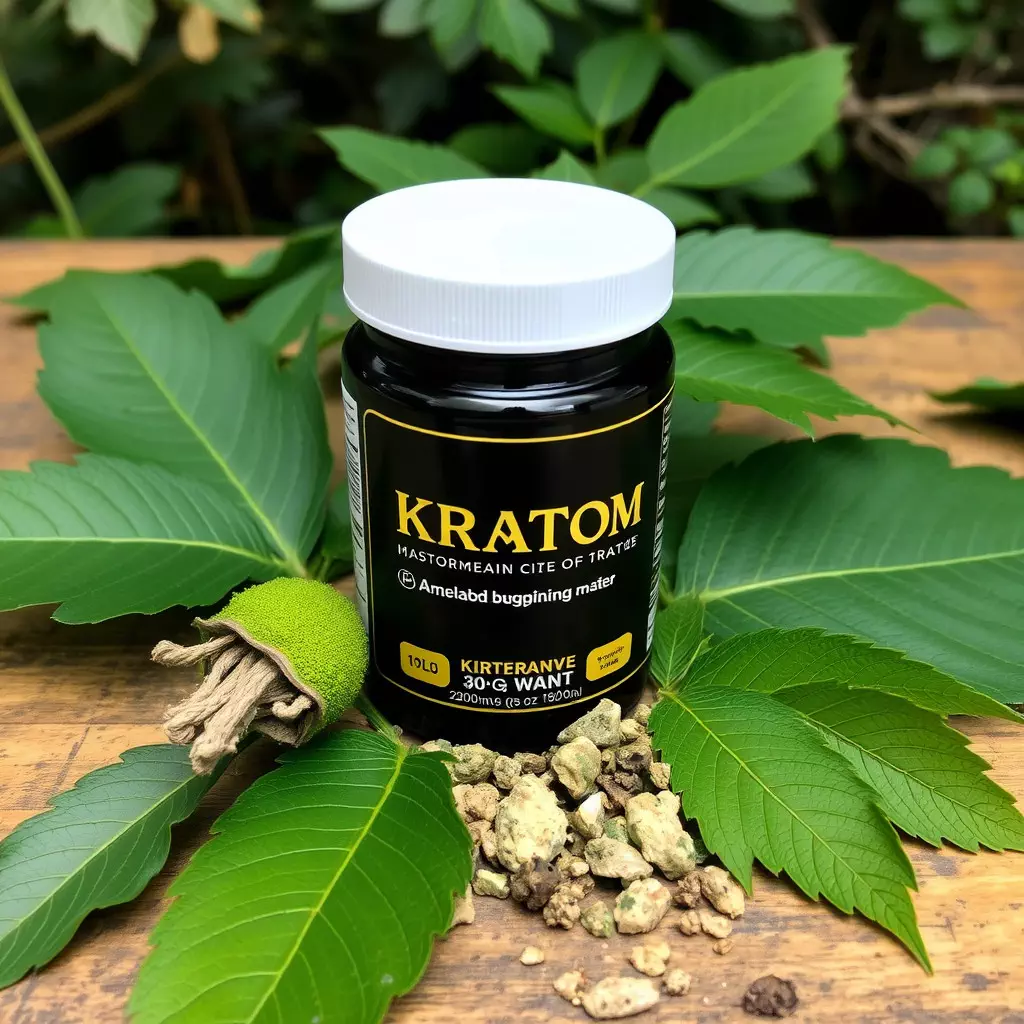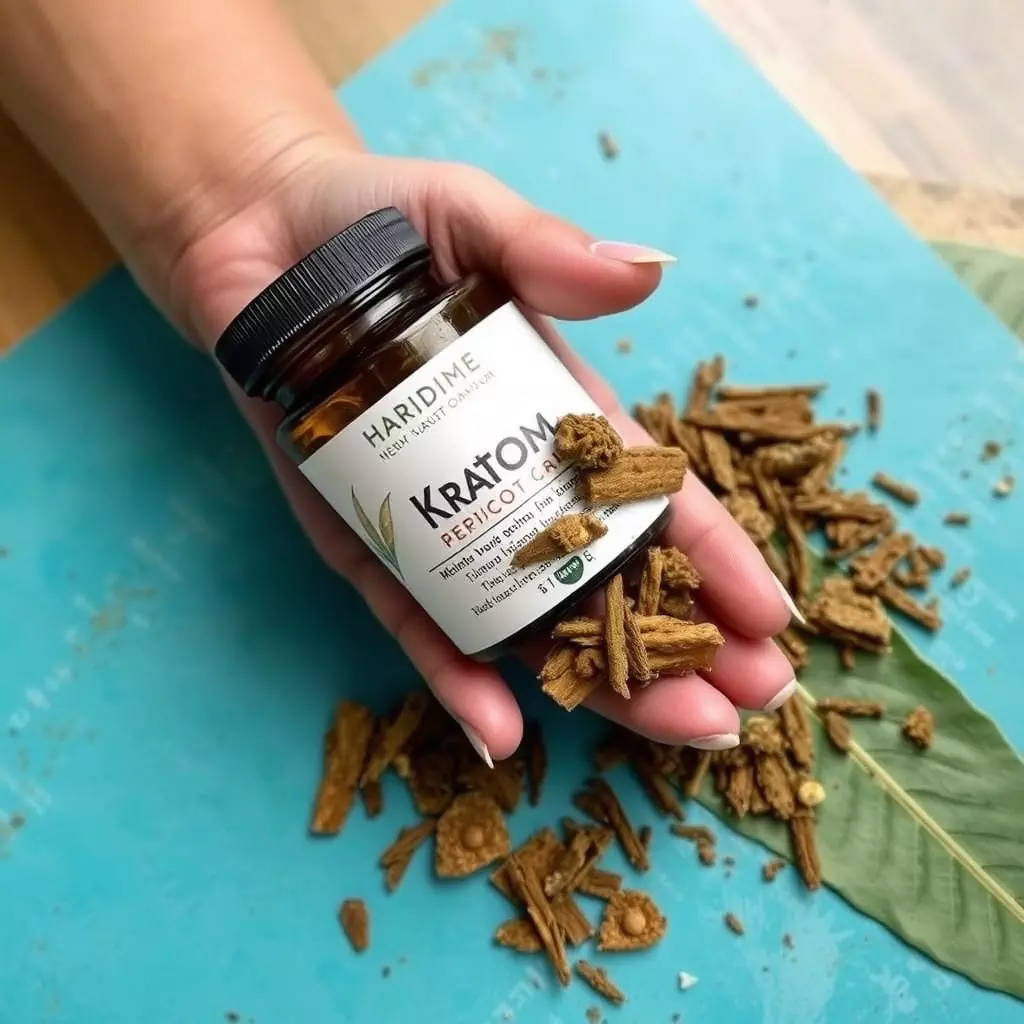Kratom, a natural substance from Southeast Asia, is emerging as a potential aid for joint pain relief and stress management due to its active alkaloids mitragynine and 7-hydroxymitragynine. These compounds engage with opioid receptors to provide analgesic effects that can help address chronic joint pain associated with conditions like osteoarthritis and rheumatoid arthritis. Beyond physical relief, users often report a soothing mental effect, which is beneficial for stress and anxiety reduction. Specific kratom strains like Bali and Maeng Da are favored for their potent analgesic properties; Bali is known for its sedative effects, suitable for chronic discomfort and anxiety, while Maeng Da offers a balance of energy and pain relief. The Red Vein Borneo strain is noted for its enduring painkilling effects without severe sedation, and the White Vein Borneo provides uplifting benefits that support mental well-being alongside pain management. For those experiencing anxiety, Red Vein strains like Sumatra and Thai are appreciated for their calming effects. However, it's crucial to consult healthcare providers before using kratom due to individual variations in response, potential interactions with other medications, and the need for ongoing research into its long-term effects. The article also discusses the importance of safe usage guidelines, including adherence to recommended dosages and the risks associated with higher doses, which may lead to adverse effects and dependency. Kratom's use for joint pain relief and stress management should be carefully considered within a personalized health regimen, ensuring it complements overall health and wellness under professional guidance.
Explore the potential of kratom as a natural intervention for joint pain relief and stress management. This article delves into how certain strains of kratom may offer both analgesic and anxiolytic properties, providing relief from physical discomfort and mental tension. We will navigate through the optimal strains that could aid in your quest for well-being, while also emphasizing critical safety considerations for responsible use. Join us to unravel the nuances of kratom’s role in joint pain relief and its impact on reducing stress and anxiety.
- Understanding Kratom's Role in Joint Pain Relief and Stress Management
- Optimal Kratom Strains for Pain Alleviation and Anxiety Reduction
- Safety Considerations and Responsible Use of Kratom for Joint Pain and Stress
Understanding Kratom's Role in Joint Pain Relief and Stress Management

Kratom, a plant originating from Southeast Asia, has garnered attention for its potential in managing joint pain and stress. The active compounds found in kratom leaves, known as mitragynine and 7-hydroxymitragynine, interact with the body’s opioid receptors, which can provide analgesic effects. This interaction may help alleviate chronic pain associated with joint conditions such as osteoarthritis and rheumatoid arthritis. Users report that kratom not only offers relief from physical discomfort but also has a calming effect on the mind, which is particularly beneficial for those experiencing stress or anxiety. The dual action of kratom makes it a compelling option for individuals seeking joint pain relief with kratom as part of their holistic approach to health and well-being.
Furthermore, the influence of kratom on stress management is multifaceted. It can promote a sense of well-being and emotional balance by modulating neurotransmitter levels in the brain. The mood-enhancing properties of kratom may help reduce feelings of anxiety and depression, which often accompany chronic pain conditions. By addressing both physical and psychological aspects, kratom can be a valuable adjunct therapy for those seeking natural alternatives to manage stress and joint pain. It is important for individuals to consult with healthcare professionals before integrating kratom into their wellness regimen, as it may interact with other medications and its long-term effects are still under investigation.
Optimal Kratom Strains for Pain Alleviation and Anxiety Reduction

When exploring natural remedies for joint pain relief with kratom, it’s crucial to consider the specific strains that are known to offer both analgesic and anxiolytic effects. Kratom, a plant originating from Southeast Asia, contains alkaloids that interact with the body’s opioid receptors, providing pain relief. For those seeking joint pain relief with kratom, strains such as Bali and Maeng Da are often recommended due to their potent analgesic properties. The Bali strain, known for its sedating effects, can help alleviate chronic discomfort and induce a sense of calm, making it an effective option for individuals experiencing both physical pain and anxiety. Similarly, the Maeng Da kratom is celebrated for its well-rounded balancing properties, offering both energy and relief from pain, which can be beneficial for managing joint issues and reducing stress levels.
Another strain that has gained attention for joint pain relief with kratom is the Borneo strain, particularly the Red Vein variety. This strain is notable for its ability to provide long-lasting pain relief without the overwhelming sedation that some may experience with Bali. Additionally, the White Vein Borneo kratom is favored for its uplifting and stimulating effects, which can help maintain a positive outlook while managing joint pain. For anxiety reduction, the Red Vein strains, such as Sumatra and Thai, are often cited for their soothing and relaxing qualities, which can help ease the mind and promote a state of tranquility. It’s important to approach kratom use with caution, as the optimal dosage and strain can vary based on individual physiology and the nature of the pain or anxiety being addressed. Always consult with a healthcare provider before incorporating kratom into your wellness regimen to ensure safety and efficacy.
Safety Considerations and Responsible Use of Kratom for Joint Pain and Stress

When considering the use of kratom for joint pain relief and stress management, it’s crucial to approach its application with caution and informed understanding. Kratom, derived from the leaves of the Mitragyna speciosa tree, has been traditionally used in certain cultures for its potential health benefits. For those experiencing joint pain, some users report that specific kratom strains can offer relief by modulating pain signals and reducing inflammation. However, it’s imperative to use kratom responsibly; this includes adhering to recommended dosages and avoiding long-term use without medical supervision. The interaction between kratom and individual health factors can vary significantly, making personalized guidance from a healthcare professional essential for safe joint pain relief with kratom.
Simultaneously, when it comes to stress, some individuals find that kratom can provide a calming effect, which may help in managing the symptoms of anxiety and promoting a sense of well-being. It’s believed that the alkaloids present in kratom leaves interact with the brain’s receptors, potentially leading to mood enhancement and a decrease in stress levels. Nonetheless, it’s important to use kratom judiciously, as high doses can lead to adverse effects and dependency. Users should be aware of their body’s response to kratom and seek professional advice to ensure that its use is not only effective for stress relief but also aligned with a holistic approach to health and wellness. Always prioritize safety and consult with healthcare providers before integrating kratom into any treatment regimen, especially if you have pre-existing conditions or are taking other medications.
In concluding our exploration of kratom’s role in joint pain relief and stress management, it’s clear that this botanical substance offers a promising avenue for those seeking natural ways to alleviate discomfort and soothe anxious thoughts. The optimal strains of kratom can be pivotal in managing both conditions, yet it is imperative to approach its use with caution and informed guidance. As outlined, safety considerations are paramount when incorporating kratom into one’s wellness routine. Responsible use, in accordance with expert advice, ensures that individuals can harness the potential benefits of kratom for joint pain relief and stress management without risking adverse effects. It is through careful consideration and adherence to best practices that kratom can be a valuable addition to one’s holistic health regimen.






